Iranian culture is full of tremendous diversity, a reflection of the various ethnic groups residing in Iran. These traditions are deeply ingrained in the collective Iranian culture and have persevered for millennia. While the global village has exerted its influence and media plays a significant role in shaping contemporary culture, many unique traditions remain intact, not only in Iran but also in other parts of the world. In this article of Parsi Tours, Iran travel agency, we will introduce some of these traditions.
Doorehami (Gathering) and Patogh (The place of gathering)
Iran’s traditions are deeply rooted in its ancient history, with each tradition bearing a historical narrative. Approximately five hundred years ago, Iranian men would gather in coffee houses, a practice that carries a fascinating historical background. It’s intriguing to note that during these gatherings, each distinguished individual would sit beneath his “Togh,” a distinctive sign with a specific shape and image, and would either narrate stories or listen to them.
Shiites in certain regions of Iran would set up these signs during the annual mourning ceremonies for their holy figures, especially during the Muharram mourning period. They would carry these signs through their neighborhoods during these events. At other times of the year, these signs were kept in religious sites, coffee houses, or the residences of neighborhood elders.
As a result of these gatherings and the practice of individuals gathering under their respective Toghs to either share stories or listen to them, the term “Patogh, meaning around or near the Togh” found its origin within the framework of Iranian culture.
“Patogh” translates to a gathering place or a spot to hang out, and even today, this word continues to be used among young people, with questions like, “Where is your Patogh?” While the practice of setting up “Toq” signs may have become less common, the Iranian cultural tradition of gathering, socializing, and partying lives on, and it can be observed in numerous Iranian cities. Many young people still congregate in specific locations, whether it’s a café or a park. They come together with a clear intention to create joyful moments for one another. The locations for today’s hangouts have evolved from traditional coffee houses to various cafes, reflecting the changing dynamics of social interaction in modern Iran.
Taroof: A Time-Honored Tradition in Iranian Culture
Taroof is a deeply rooted tradition within Iranian culture that continues to endure across all levels of society. It represents a longstanding moral code in Iran, and chances are, any tourist visiting the country will encounter it frequently. Whether in a taxi, at a restaurant when settling the bill, or during a shopping in the market, if there’s even a modest level of familiarity between seller and customer, you may hear the famous phrase, “Be my guest, it’s not possible.”
In Iran, it’s common for sellers, buyers, and even friends and relatives to engage in Taroof. An example when both the seller and the customer engage in Taroof is something like this. The seller initially offers an Item as a gesture of hospitality, and the customer, in response, politely declines the offer out of respect for the seller’s business and to adhere to the cultural norms of Taroof. This dance of politeness is a typical example of how Taroof is practiced in everyday interactions in Iran. This cultural practice is prevalent in cities throughout Iran and serves as a testament to Iranian ethics and values.
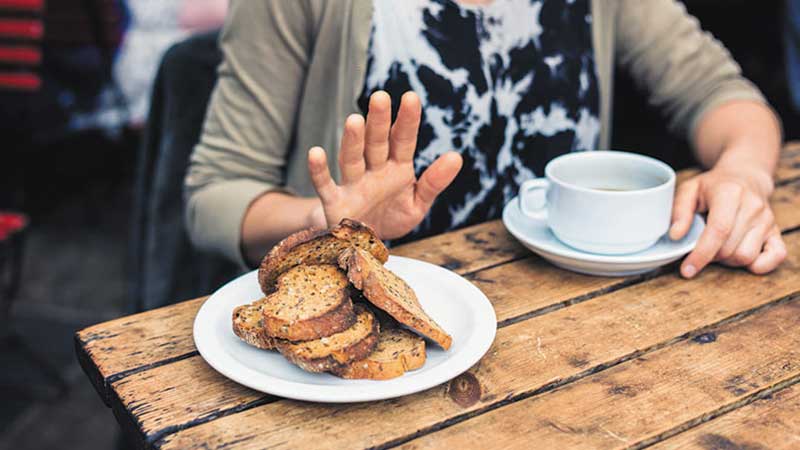
Taroof: A Time-Honored Tradition in Iranian Culture
However, this tradition of politeness isn’t limited to commercial transactions. In many Iranian cities, when you travel and engage in conversations with the locals, they might kindly invite you, saying, “Come to our house, and we’ll be at your service.” This exemplifies the innate Iranian hospitality, which remains a distinct and prevalent trait in Iranian society today.
Respecting Others: The Tradition of Not Turning Your Back in Iranian Culture
Another significant Iranian custom revolves around the practice of not turning your back on others, whether it’s at a social gathering, in a taxi, or even on a bus. Iranians have a cultural inclination to apologize when they find themselves seated in a way that their back faces someone else. It’s common to hear them say, “I’m sorry, my back is to you.”
This custom finds its roots in historical depictions of old houses and past gatherings in paintings. In these scenes, people are always shown sitting together, never with their backs turned to one another. These age-old customs have endured in Iran, and as times have changed, with the introduction of taxis and cars into Iranian life, you’ll frequently hear the phrase “Excuse me, my back is to you.” The polite response to this gesture is often, “A flower has no back and front.”
These enduring customs are a testament to Iranian culture and its emphasis on mutual respect and consideration, values that continue to be upheld by Iranians across the country.
Nazri: The Tradition of Generous Offerings
The act of giving offerings is not exclusive to Iranians; it is a practice observed among followers of various religions, including Christians. Although it may go by different names, the essence of giving offerings transcends cultural and religious boundaries. Within Iranian culture, the tradition of offering holds a unique significance.
Nazri represents a form of food or drink, ranging from syrup and dates to sweets and various types of dishes, meticulously prepared by Iranians during religious ceremonies. These offerings are then distributed generously to a multitude of people, without regard for their familiarity with the giver, economic status, or religious beliefs, whether they are Muslim, Christian, or have no religious affiliation.
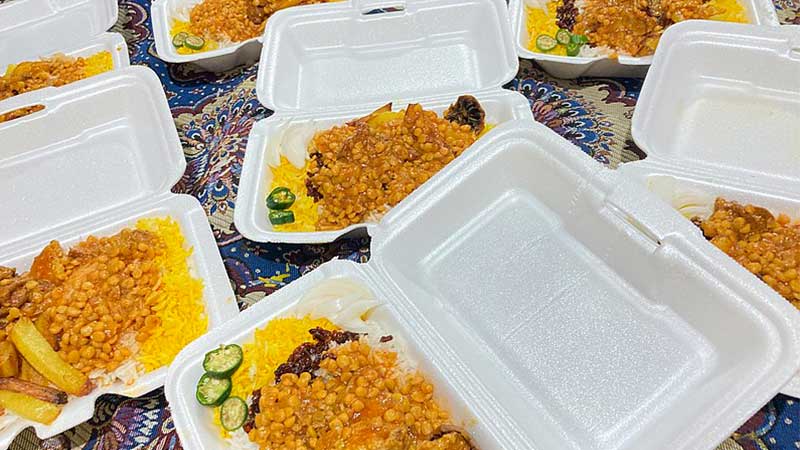
Nazri: The Tradition of Generous Offerings
In the spirit of generosity that characterizes Iranian culture, there are no constraints on the distribution of Nazri. The finest ingredients and materials are typically used in its preparation. Within Iranian society, Nazri is considered a source of goodness, blessings, well-being, and affection for both the giver and the recipient. This tradition has played a pivotal role in fostering connections among diverse ethnic groups and introducing Iranian traditions and culture to various regions within Iran and across the globe.
During religious occasions such as Tasua, Ashura, and the holy month of Ramadan, Muslims worldwide partake in the Nazri culture by providing meals to millions of individuals, regardless of their religious backgrounds. This custom transcends geographical boundaries, reaching cities like Stockholm, Johannesburg, and New York. In essence, this captivating and heartwarming aspect of Iranian, Muslim, and other religious cultures serves as a catalyst for friendship, peace, and compassion towards the less fortunate. It stands as a tradition that deserves recognition as part of the world’s intangible heritage.
The Tradition of Sharing Sweets
The act of giving sweets is a distinctive, delightful, and flavorsome tradition deeply rooted in Iranian culture. This custom transcends religious and ethnic boundaries and is practiced both within and outside Iran. It remains a cherished and heartwarming practice for Iranians.
On various occasions such as celebrations, moments of success, the sharing of good news, expressions of happiness, or the untying of life’s knots, Iranians have a deeply ingrained habit of spreading joy by distributing sweets or meals. These sweets can range from mouthwatering strawberry tarts to raisins dried on the roofs of houses during the summer.
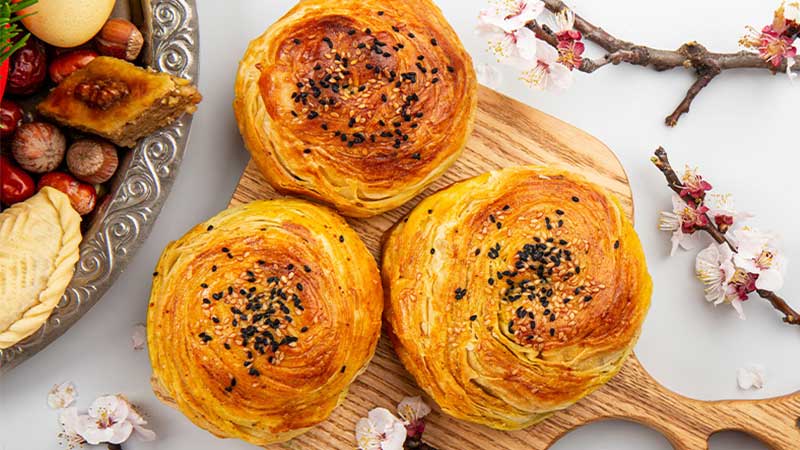
The Tradition of Sharing Sweets
In essence, this tradition of sharing sweets and meals, carried by Iranians to various corners of the world, serves as a warm and robust cultural ambassador. It embodies values of generosity, promotes peace and harmony, provides moments of relaxation, and, in simpler terms, radiates positive energy, making it a cherished aspect of Iranian traditions and culture.
Ancient Nowruz Celebrations and Their Enduring Traditions
Numerous enduring Iranian traditions find their origins in the ancient celebrations of this culturally rich nation. Among these customs, the most significant is Nowruz, celebrated in precise alignment with the Earth’s renewal and its journey around the sun. This celebration holds global importance, having been recognized as a UNESCO-listed intangible cultural heritage, and it is recognized worldwide.
Housecleaning
One notable tradition of Iranian culture during the ancient Nowruz festival is the practice of thoroughly cleaning and decorating one’s home. Iranians believe that to welcome the new year, all dwellings and possessions must be spotless—a tradition known as “Shaking your house.” This housecleaning ritual is an annual event observed by Iranians, much like the Nowruz celebration itself.
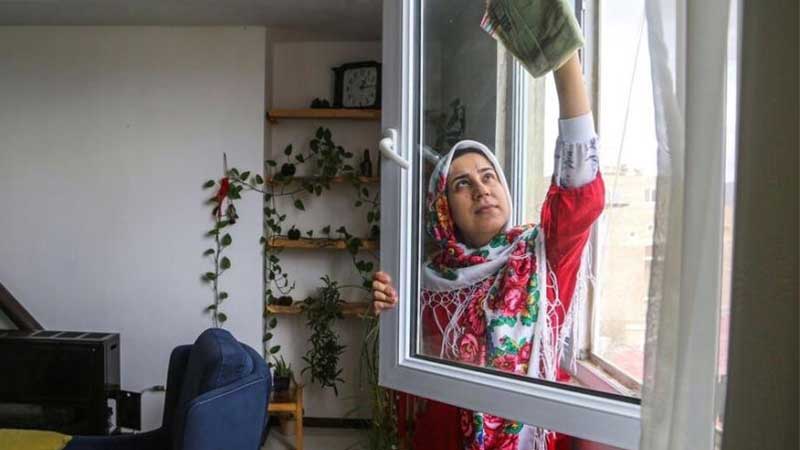
Housecleaning
Nowruz Purchases
Another age-old tradition for Nowruz is the purchase of new clothes and items. Even those with limited financial means will make an effort to buy a new item or garment. The days of March leading up to Nowruz are a bustling time in Iranian markets, with people acquiring new possessions to mark the occasion.
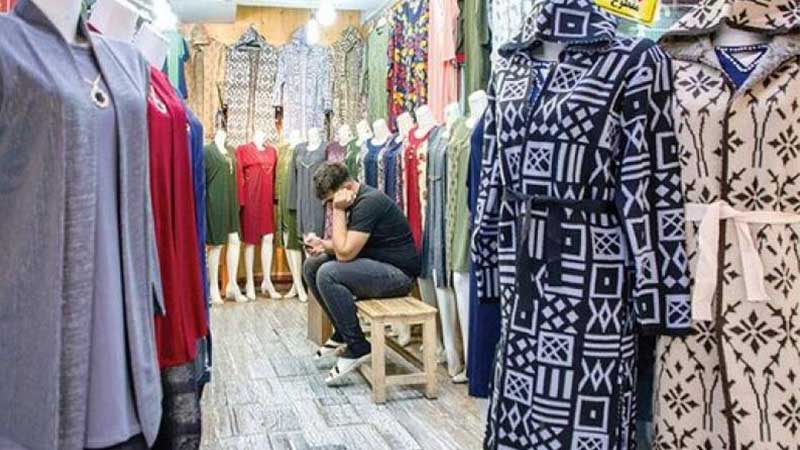
Nowruz Purchases
Haft Sin Table
An essential element of Nowruz celebration in Iranian culture is the Haft Sin table, which Iranians prepare in advance. This tradition involves setting up a table adorned with seven symbolic items, each starting with the Persian letter ‘S.’ While many now purchase pre-made Haft Sin items, a small Haft Sin table can be found in almost every Iranian household for the duration of the thirteen-day Nowruz celebration.
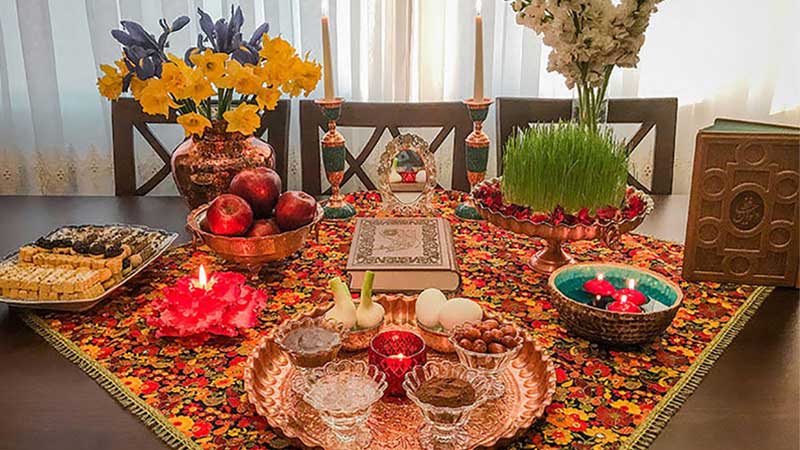
Haft Sin Table
Last Thursday of the Year
On the last Thursday of the year, Iranians have a tradition of visiting tombs of their loved ones. This practice dates back to Zoroastrianism during the Sassanid era and has persisted through the Islamic period. In Zoroastrian belief, it is thought that the deceased person remain a part of their living relatives’ lives, and it is obligatory for them to ensure that the departed souls are content.
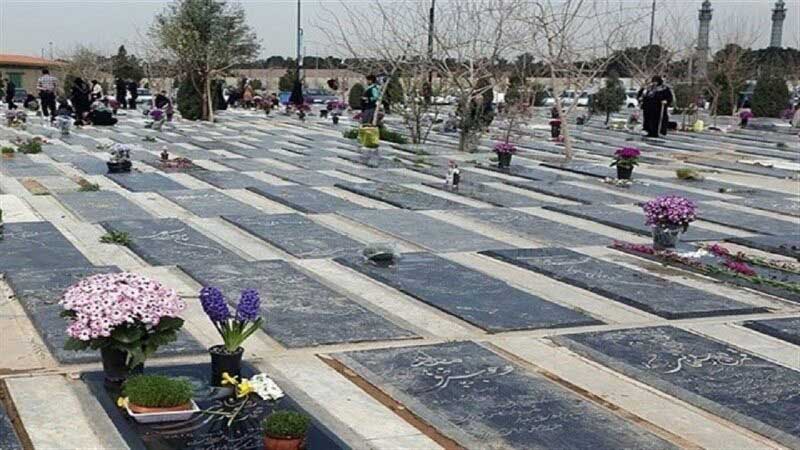
Last Thursday of the Year
While the tradition has taken on Islamic characteristics, many Iranians continue to visit tombs, providing offerings in honor of the deceased. This annual observance is a significant aspect of Iranian traditions and culture, bridging historical and religious contexts.
Chaharshanbe Suri: the festival of fire
Chaharshanbe Suri, a cherished Iranian tradition, continues to thrive among the people of Iran. This lively celebration, also known as the Festival of Fire, takes place on the last Wednesday of the Persian year. During Chaharshanbe Suri, Iranians light bonfires in the streets and jump over the flames, symbolically leaving behind their worries and fears from the past year and embracing the promise of a brighter future.
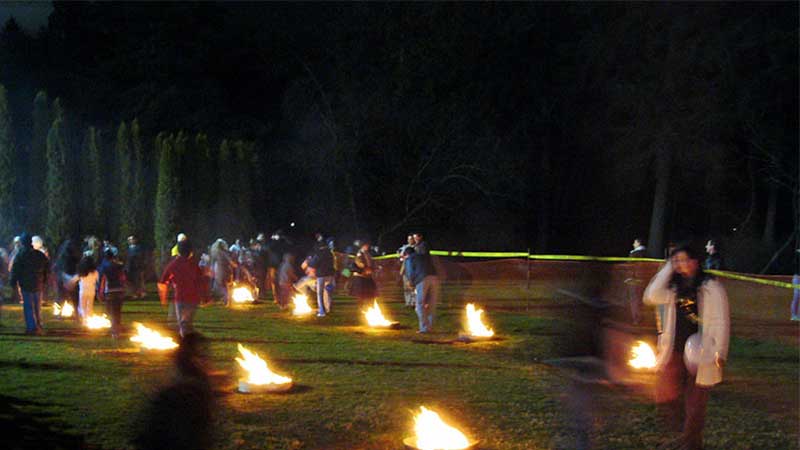
Chaharshanbe Suri: the festival of fire
This tradition not only serves as a joyful prelude to the grand Nowruz celebrations but also highlights the resilience of Iranian traditions and culture in the face of changing times. Chaharshanbe Suri remains a vibrant and communal event, fostering unity and optimism as Iranians of all ages come together to partake in this festival. Now you might have this question in your mind that “Is Iran safe for tourists in this festival?”, and the answer is “absolutely yes!”
Celebrating a birthday the night before
In Iranian culture, a distinctive tradition revolves around the timing of birthday celebrations. Iranians typically celebrate a person’s birthday on the actual day itself. It’s worth noting that in some other cultures, such as in Germany, congratulating someone in advance of their birthday is not considered auspicious. However, in Iran, birthday celebrations are often held on the evening preceding the person’s actual birthday. While this custom may seem minor, it underscores the cultural distinctions that can enrich travel experiences and expose individuals to new perspectives. Celebrating birthdays and, at times, wedding anniversaries has become a prevalent tradition in Iranian culture today, albeit without deep historical roots. It’s important to mention that in the past, birthdays of royalty, including kings, crown princes, and viceroys, were grandly celebrated in Iran.
Lighting Esfand
Lighting Esfand holds a special place in Iranian traditions and culture, driven by a belief in its power to ward off evil spirits and negative energy. Esfand, also known as wild rue, Syrian rue, African rue, espand, or harmel, is traditionally lit on Wednesday and Friday nights to cleanse and protect loved ones from malevolent forces.
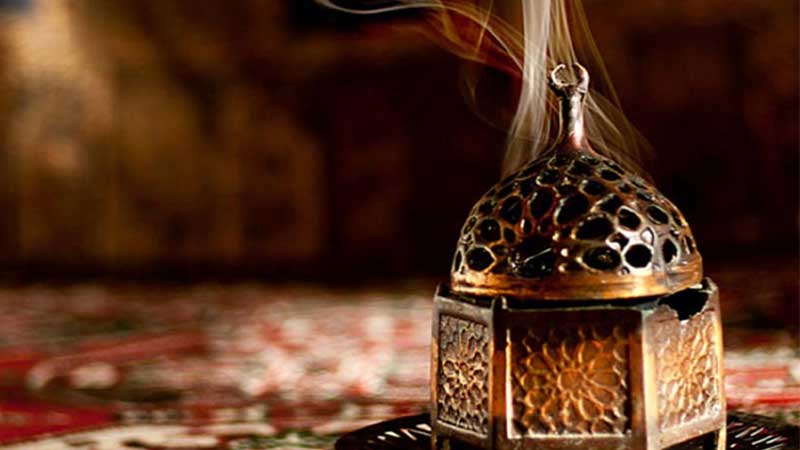
Lighting Esfand
This practice extends to significant life events like weddings, where Esfand plays a pivotal role. During these ceremonies, the bride and groom take turns burning Esfand atop each other’s heads using an Esfand-Dan, an item designed for this purpose. While Indian culture emphasizes the lighting of oud as a significant tradition, in Iran, the act of lighting and burning Esfand remains a culturally rich and enduring practice.
Conclusion
It’s essential to recognize that the customs and traditions highlighted here are only a glimpse into the vast tapestry of Iran’s rich cultural heritage. If you have insights or personal experiences related to these traditions, we encourage you to share them in the comments section below. Furthermore, we invite you to spread the word by sharing the link to this post with your friends and family, particularly those who share an interest in exploring Iranian traditions and tourism. Your contributions and engagement help foster a deeper appreciation for the cultural richness that Iran has to offer.



